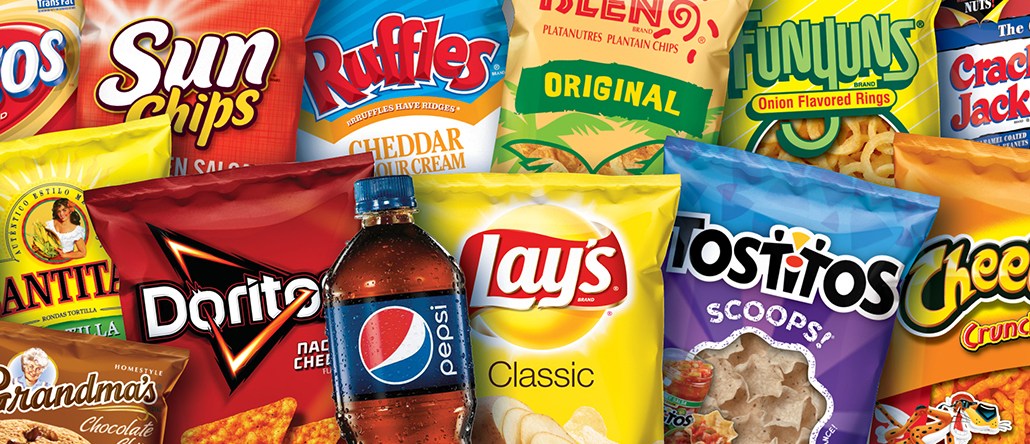Join us Dec. 1-3 in New Orleans for the Digiday Programmatic Marketing Summit

Frito-Lay — with a portfolio includes Cheetos, Doritos, Lay’s, Stacy’s and more — has been upping its innovation game when it comes to marketing and product development.
Its perennial “Do Us a Flavor” campaign now turns four of the best flavor ideas from the consumer to actual products. New crowdsourced flavors have included gyro and truffle fries. And this year, its “Boldest Choice” campaign, encouraged young Americans to vote.

These initiatives, and more, come from a marketing department of around 200 led by Jennifer Saenz, who was promoted from head of innovation to chief marketing officer in February. “For us, innovation in keeping consumers’ attention is more important than ever,” said Saenz. “It’s really about how we can interact with consumers in new ways and retain them.”
During this election season, Frito-Lay ran a campaign called “Boldest Choice,” where the brand offered limited edition “No Choice” Doritos filled with triangular cardboard chips. People could purchase a bag either online or on one of the six customized vending machines on college campuses, and then send it either to themselves or to someone they knew who was not registered.
“This is a neat example to show how we take something that people are interested in every day and then think about a new way to package it,” said Saenz.
And earlier this year, Frito-Lay-owned Lay’s invited fans to vote which four of eight flavors should stay. (Winners were Flamin’ Hot, Cheddar & Sour Cream, Honey Barbecue and Sea Salt & Cracked Pepper.)
“In our category, flavor and variety are really what drives people’s interest. We do lots of trend watching and social listening,” said Saenz. “The more on trend we can be with the flavor that we are delivering, the more successful we are as a company.”
Frito-Lay employs a “70-20-10” approach to innovation: 70 percent of its marketing follows traditional methodology like TV, search and email, 20 percent for new, experiential marketing and 10 percent is meant to be unique.
“We need to make sure that the business delivers consistent results for Wall Street, but at the same time, we want to make a difference,” said Saenz.
Volume growth at Frito-Lay has been around 2 percent, revenue growth has been around 4 percent and profit has been around 6 percent, plus or minus one point, said Hugh Johnston, vice chairman and CFO for PepsiCo. Mondelēz International, one of Frito-Lay’s biggest competitors, saw an average drop of 1.2 percent in its revenue from 2011 to 2015, with a decrease of 13.5 percent last year, in comparison.
“Grow the core and add more,” said Saenz on the overall strategy, meaning that it will always protect core businesses like Lay’s, Doritos and Cheetos to drive the book, while bringing more smaller brands — like the 35-calories-per-cup Smartfood popcorn — to the portfolio based on consumers’ preference.
Going forward the Frito-Lay marketing team also plans to do more personalized marketing through data analytics and programmatic media buying (currently managed by an in-house team of five in collaboration with its media agency OMD), said Saenz.
For instance, her team has done lots of NFL programming for Tostitos, the league’s “official chip.” By using location data, her team can recognize where people are, which football team may be playing in their area and what retailers might be around. Based on the information, Tostitos customizes social posts for different consumers featuring their football team.
“We see really great return when we are able to serve more relevant, personalized posts to the consumer,” said Saenz.
More in Marketing

How AI is reinventing the holiday gift guide
Beyond driving immediate sales, brands this year are angling to get into gift guides to help them with SEO and GEO.

In Graphic Detail: The rise of micro dramas that are attracting big ad dollars
Micro dramas are attracting attention, so Digiday has charted the format’s revenue forecasts and viewership, to understand how we got here.

Independent agencies face new frontier as agency-in-a-box tools democratize creativity
AI-powered ‘agency-in-a-box’ tools are redefining the creative landscape, forcing independent agencies to innovate or be outpaced by automation.








